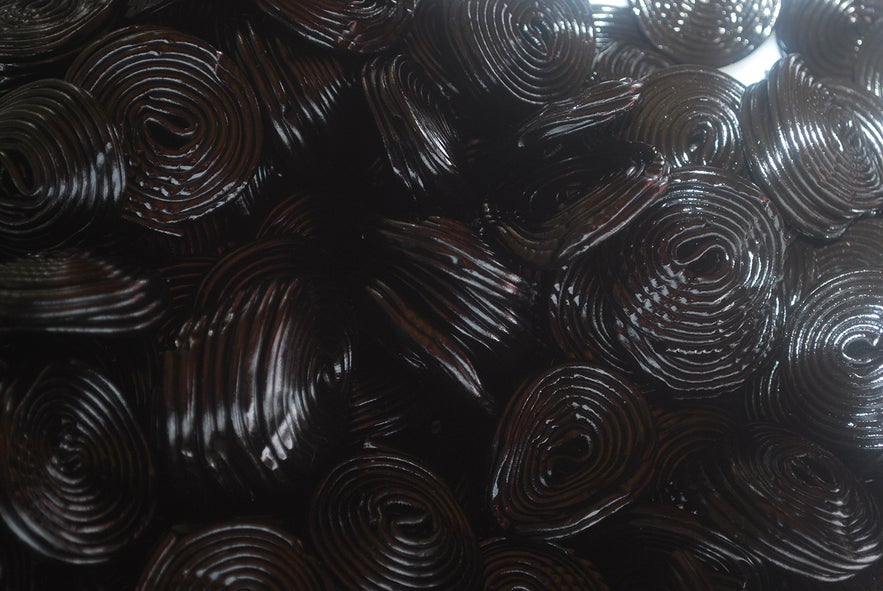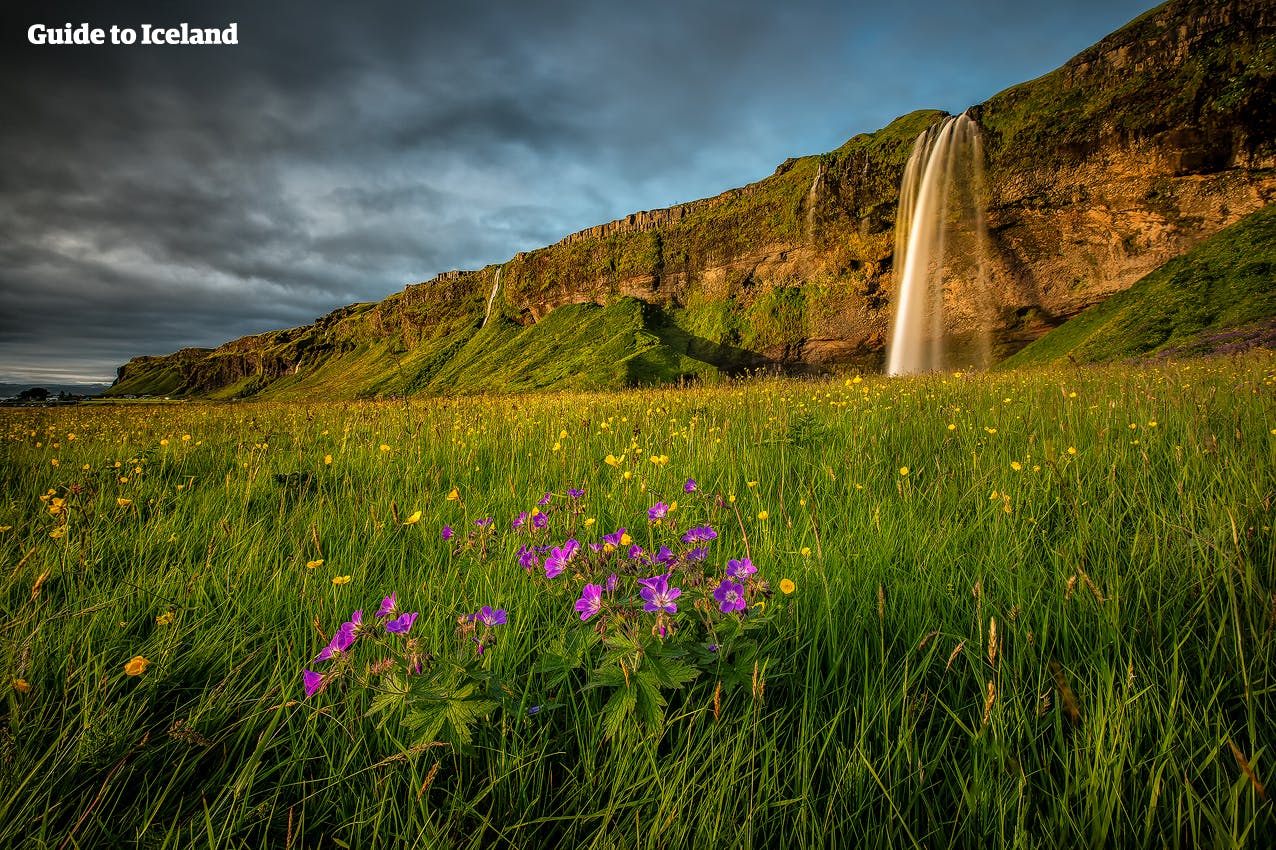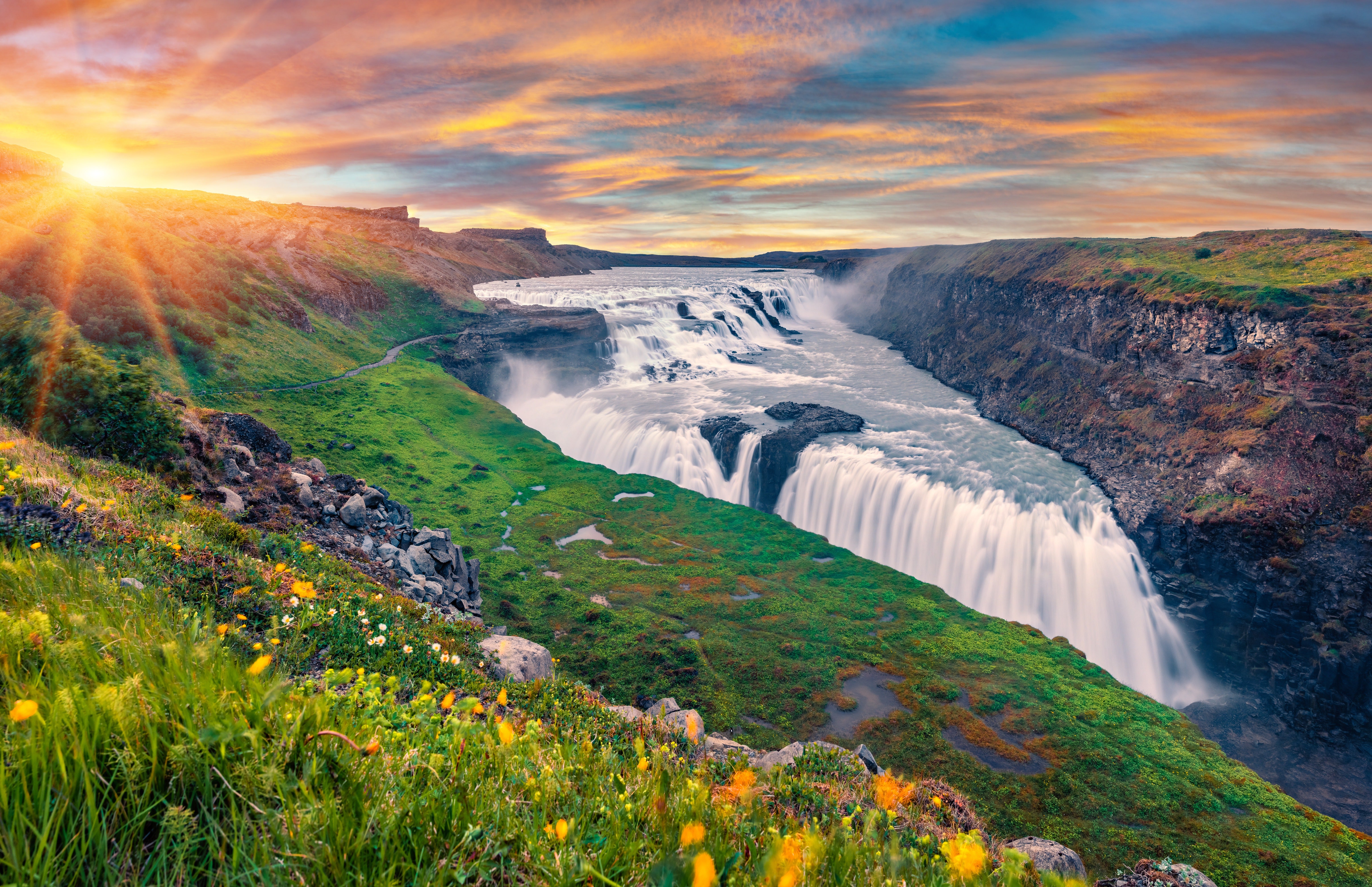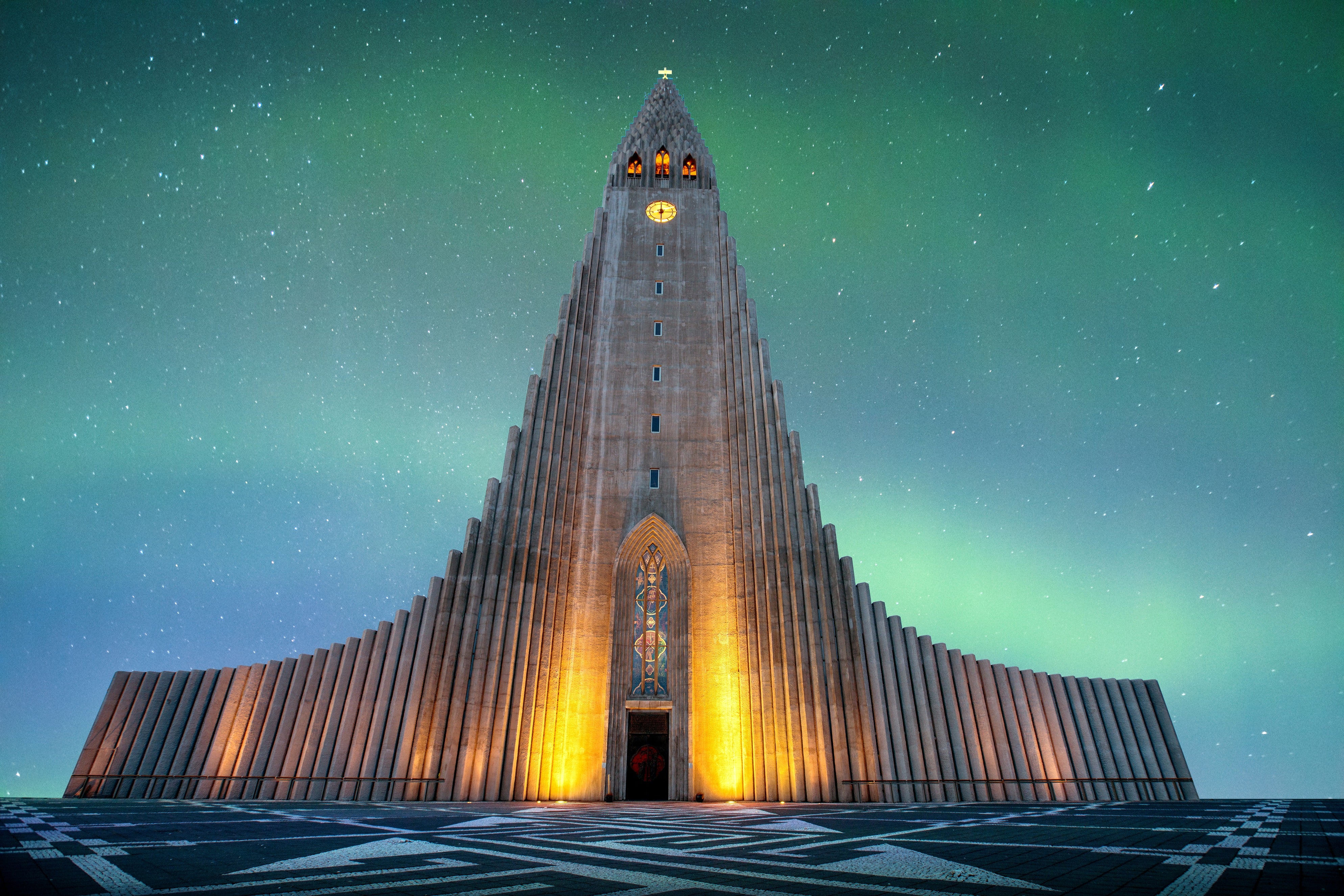Curious about Icelandic food or what to eat in Iceland? Read this comprehensive overview of Icelandic food culture and learn about all the different Iceland foods you can try while visiting Iceland.
Icelanders have long mastered the art of doing more with less—a trait that's deeply reflected in their food culture. Harsh winters and poor soil once limited access to fresh ingredients, shaping a cuisine rooted in simplicity and survival.
Why You Can Trust Our Content
Guide to Iceland is the most trusted travel platform in Iceland, helping millions of visitors each year. All our content is written and reviewed by local experts who are deeply familiar with Iceland. You can count on us for accurate, up-to-date, and trustworthy travel advice.
Today, however, the Icelandic culinary scene is thriving. The best restaurants in Reykjavik are crafting inventive dishes using fresh, local ingredients, honoring tradition while embracing creativity.
Staples like fish, dairy, and lamb are central to many dishes that may seem strange at first, but once you try them, you’ll want to keep coming back. This has made guided food tours a popular way to experience Iceland's flavors firsthand.
From the beloved Icelandic hot dog (pylsa) to smoked lamb and fermented specialties, there’s something for every taste. To experience the best spots for yourself, take advantage of great discounts and special offers through Guide to Iceland's VIP club.
Read on to learn about food in Iceland and how you can experience the best that Icelandic cuisine has to offer.
Key Takeaways
-
Traditional food in Iceland is unique and honors the nation’s determination to make due in harsh conditions.
-
Chefs now incorporate modern ingredients like hothouse-grown vegetables and fresh herbs into traditional dishes, enhancing their flavors and providing an elevated culinary experience.
-
Iceland is well-known for preserved foods like salt cod, svid (sheep head), and hakarl (fermented shark).
- See also the Top 29 Restaurants in Iceland
Best Place To Try Icelandic Food

Trying Icelandic food is a fantastic way to dive into the local culture, and there are plenty of restaurants that serve all kinds of traditional dishes. One of the best places for this is Hressingarskalinn, or Hresso, in downtown Reykjavik, which opened in 1932.
Hresso serves various local favorites, including:
-
Breaded lamb chops
-
Meat soup
-
Fermented shark
-
Sheep head
They offer a reasonably priced two- or three-course menu, or you can order a tasty sharing pan with a generous serving of cod, bacalao, or panfried salmon.
Hresso is located on the lively Austurstraeti Street, a pedestrian-friendly street in the capital that's close to many major attractions. Its cozy, welcoming atmosphere and traditional and modern dishes make it the perfect spot to experience Iceland's food culture.
It's a popular spot, so make sure to book your table at Hresso beforehand.
Traditional Icelandic Fish and Seafood
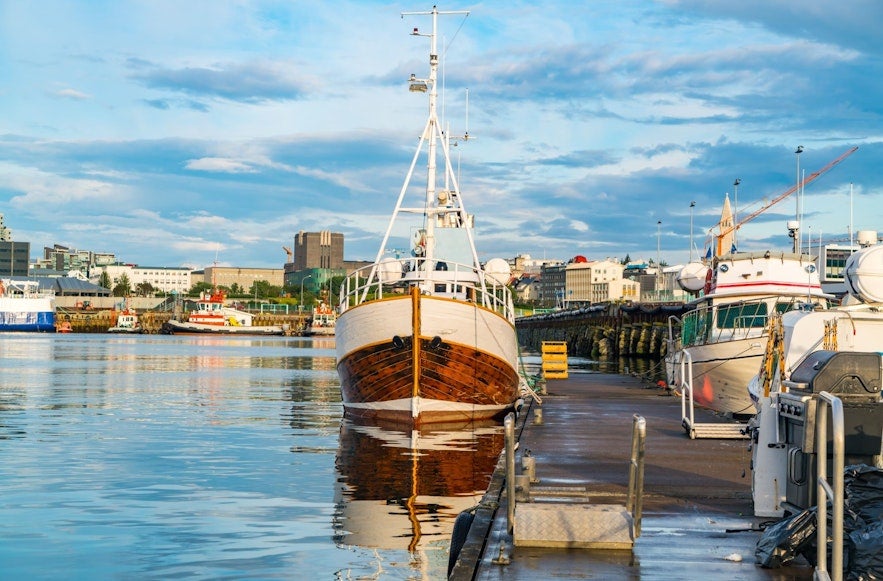
Fish has been a staple of Icelandic cuisine since the first settlers arrived. The surrounding waters are rich with marine life, providing an abundance of cod, haddock, and other species that have sustained the population for centuries.
Fishing not only put food on the table but also provided exports that helped transform the country from one of the poorest in Europe at the beginning of the 19th century to one of the wealthiest today.
- See also Fishing in Iceland
- Check out the Top 10 Seafood Restaurants in Reykjavik
Today, Icelanders eat fish on average twice a week, and over half of the population consumes fish oil, or "lysi," at least four times a week.
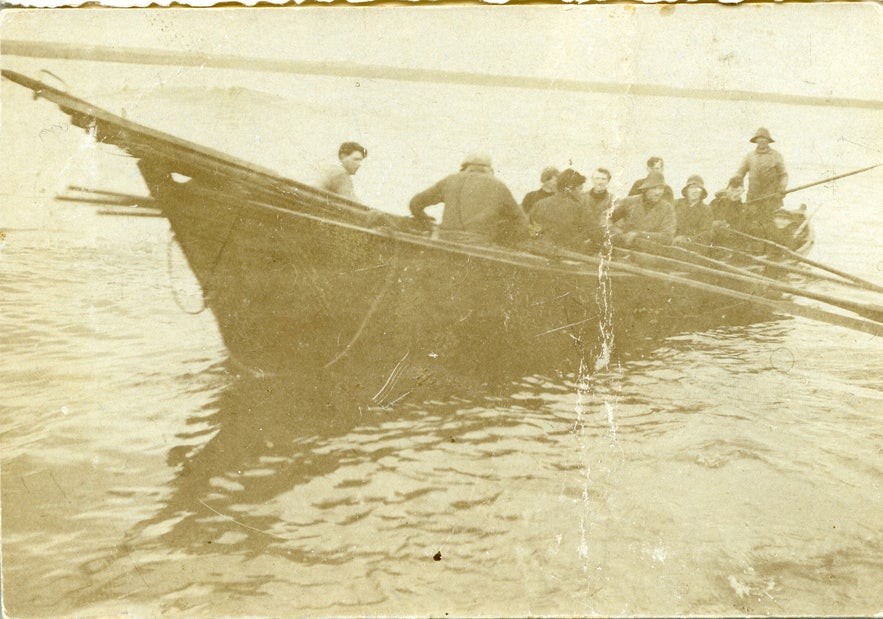
The country is dotted with numerous seafood restaurants, mainly serving cod, haddock, salmon, and monkfish. Modern chefs in Iceland are masters at creating excellent dishes, infusing the ocean’s bounty with herbs and spices found in Icelandic nature.
You can find many great fish dishes and traditional Icelandic foods in Reykjavik. But aside from a great meal at a restaurant, you should try out the following foods.
Hardfiskur - Stockfish
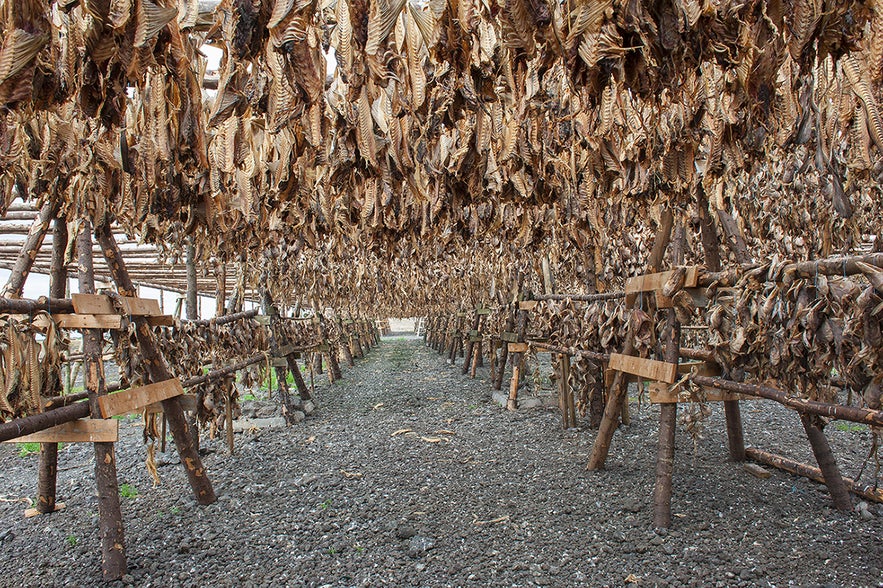
Hardfiskur is a flattened fish that is hung on wooden racks by the foreshore to be dried by cold air and wind. This traditional Icelandic food is available at most places you buy groceries, as well as the Kolaportid Flea Market.
Stockfish is eaten as snacks straight out of the bag or with butter spread on it. Although people don’t eat it quite as much today, it remains a staple and popular traditional food in Iceland.
Dried stockfish was historically eaten as a side dish instead of bread, as was more common in mainland Europe.
Stockfish is commonly made with haddock, Atlantic wolffish, or cod that has been caught by angling using live or artificial bait. After cleaning and deboning, the fish is hung up to dry. Modern drying methods allow producers to make ready-to-eat stockfish in 36 to 48 hours.
Plokkfiskur - Fish Stew

"Plokkfiskur" is an Icelandic fish stew made from a simple mix of white fish, potatoes, onions, flour, milk, and seasoning. Recently, some recipes have also included chives, curry, bearnaise sauce, or cheese. Plokkfiskur is traditionally served with a side of rye bread and butter.
Plokkfiskur is an example of an old recipe, using basic ingredients that were available in most households during the early 20th century. It has recently been revived, with many creative chefs offering their own unique spin on this classic, which you can try at various food spots around town.
Humar - Icelandic Lobster
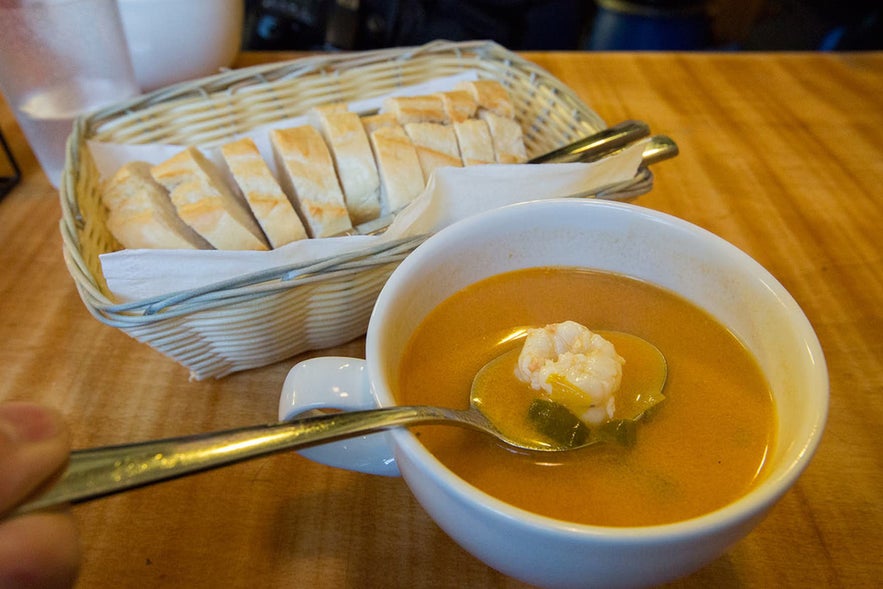
"Humar" refers to Icelandic lobster or langoustine. They’re usually caught in the waters by the South Coast and are known for their tasty, tender meat. You can find it grilled, baked, fried, or even as a pizza topping. No matter how you like it cooked, it's a must-try for seafood lovers exploring Icelandic food.
Icelandic Bread
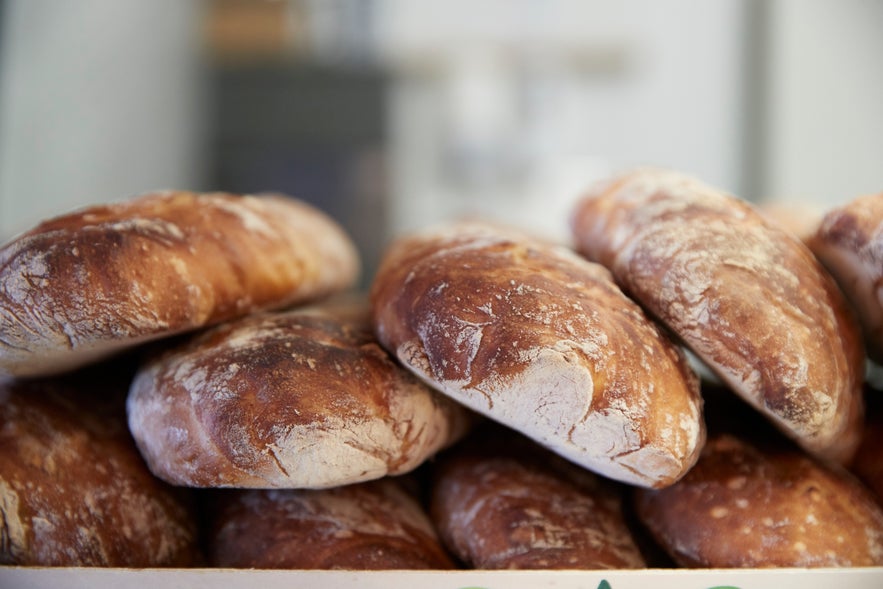
Bread is one of the most popular foods in Iceland, despite grain being historically difficult to grow on the island nation. You’ll find several distinct varieties of bread available in restaurants and bakeries alike. Here are some of the most well-loved loaves that you’ll need to try on your trip.
Laufabraud - Leaf Bread
Many families make "laufabraud," or leaf bread, before Christmas. It’s a very thin, round flatbread decorated with leaflike geometric patterns.
Families create beautiful patterns in the bread before quickly frying it in a pan.
They then serve "laufabraud" with butter during Christmas dinner. Due to its close association with the holiday, it’s also known as Icelandic Christmas bread.
- See also Christmas in Iceland
Flatkaka - Rye Flatbread
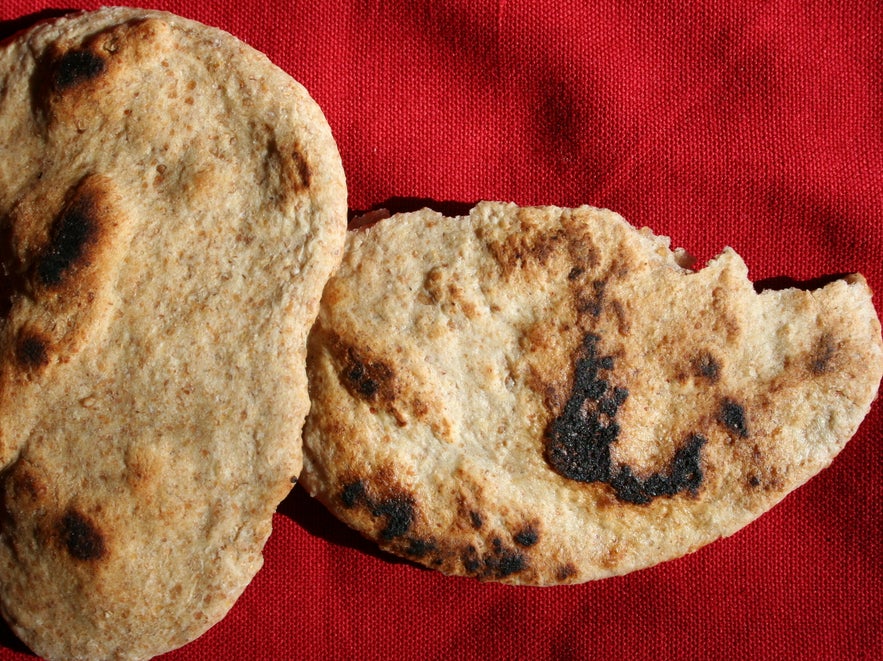
Photo from Wikimedia, Creative Commons, by Jonathunder. No edits made.
Another traditional Icelandic bread called "flatkaka," a thin, round rye flatbread with a distinct pattern. The tradition of baking "flatkaka" is believed to date back to roughly 1,000 AD when people baked it on hot stones or straight on the fire’s embers.
This method helped create the bread’s signature spotted pattern. Later, small but heavy cast-iron frying pans replaced it.
Today, these types of bread are usually spread with butter and topped with a slice of smoked lamb, which makes for a nice afternoon meal.
Rugbraud - Icelandic Rye Bread
 If you visit the country, don't forget to try Icelandic rye bread or "rugbraud," a dark, sweet-tasting bread with a thick consistency and no crust. Tradition dictates it’s baked in a pot placed on the embers of a dying fire, then covered in turf and left to stand overnight.
If you visit the country, don't forget to try Icelandic rye bread or "rugbraud," a dark, sweet-tasting bread with a thick consistency and no crust. Tradition dictates it’s baked in a pot placed on the embers of a dying fire, then covered in turf and left to stand overnight.
Another way to make "rugbraud" is to bury the pot near a hot spring and let the geothermal heat bake the bread, as seen in the video below. When using this method, the bread is usually called "hverabraud" or hot-spring bread. You can try it on this geothermal culinary tour from Fontana Spa near the Golden Circle.
Rugbraud is perhaps best paired with fish, but you can also eat it on its own. Both "rugbraud" and "flatkaka" are delicious, topped with mutton pate, butter, cheese, pickled herring, or smoked lamb.
Icelandic Pastries and Sweet Bread
In the 19th century, sugar was introduced to the Icelandic diet and was considered a necessary nutrient for years. Head to a bakery or a cafe to try the following modern(-ish) sweetbreads.
Kleina - Fried Dough
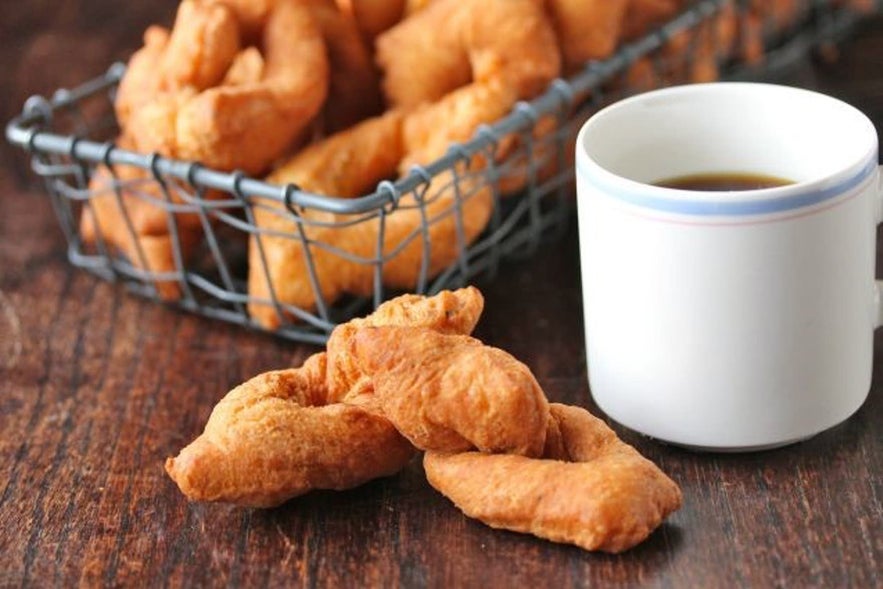
Kleina is a deep-fried dough that’s lightly crispy on the outside and soft and delicious on the inside. Its twisted shape helps the dough cook evenly, eliminating doughy or undercooked textures.
It's popular in Scandinavia and Germany during Christmastime, but you can find it year-round in Iceland! If you book a table at Saeta Svinid Gastropub, they serve great kleina as a dessert!
Snudur - Icelandic Cinnamon Roll

"Snudur" is the Icelandic version of a cinnamon roll, often covered with glaze on the top that comes in three varieties:
-
A classic pink glaze
-
A chocolate glaze
-
A caramel glaze
Whatever glaze you choose, make sure to pick a snudur with plenty of it, as it can vary from snudur to snudur.
Many modern bakeries make their own unique version of snudur, with various flavors incorporated into the roll, such as vanilla, blueberries, and even licorice!
Ponnukokur - Icelandic Pancakes
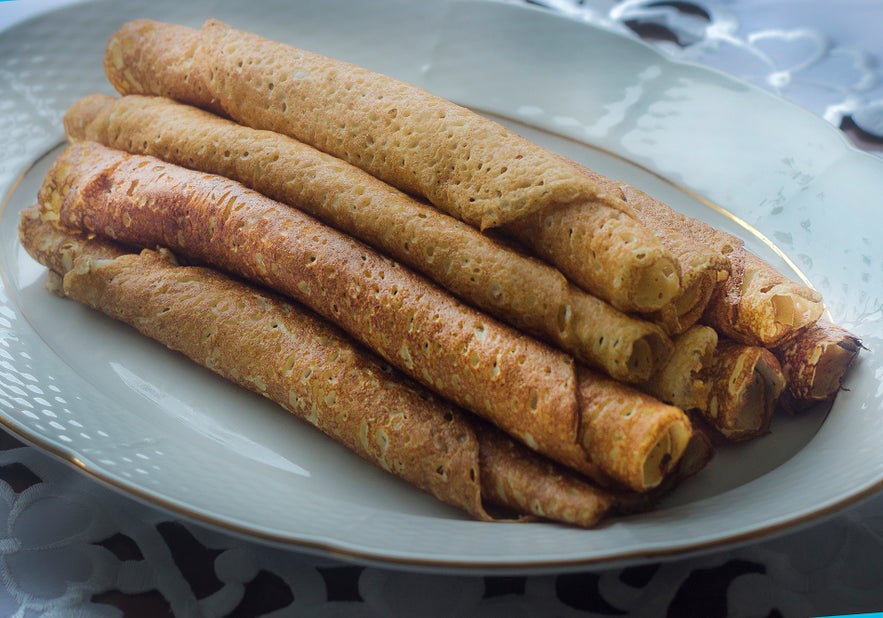
Icelandic pancakes are thin crepes usually served rolled up with a good amount of sugar (as seen above) or carefully folded with rhubarb jam and whipped cream.
These are very popular for an afternoon family gathering, paired with either a cup of black coffee or a cold glass of milk.
Vinarbraud - Icelandic Viennoiserie
"Vinarbraud" is a popular type of viennoiserie pastry in Iceland, inspired by a classic Danish pastry. The Icelandic version is like a long Danish, with layers of glaze, jam, almonds, and custard.
Vinarbraud can be quite large, and people typically serve it in slices.
- Learn more about The Best Bakeries in Reykjavik
Icelandic Lamb
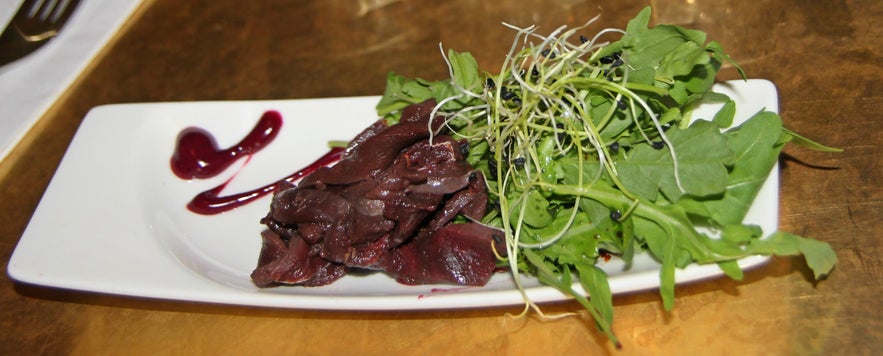
Sheep have been the nation's lifeblood since it was first settled in the late 9th century. Their wool has kept the people warm, and the meat has helped keep Icelanders alive through severe weather conditions.
The original settlers imported these animals, which have since been raised and bred in total isolation, unaffected by other breeds. This has earned Icelandic sheep the nickname "settlement breed."
Though famous for its wool used in lopapeysa wool sweaters, Icelandic sheep are mainly farmed for their meat. Each spring, the sheep are let out of their pen to roam freely around the countryside, spending the whole summer grazing in the pesticide-free wilderness.
Since the climate prevents grain growth, the sheep live on grass, angelica, berries, and seaweed, giving the meat a tender, mild flavor. Whether smoked, grilled, broiled, slow-cooked, in a kebab, or a stir-fry, you can find numerous Icelandic lamb variations throughout the country.
And as with the seafood, whatever you choose will surely be delicious.
- Learn more in Icelandic Sheep: The Ultimate Guide
- See also the Top 5 Steakhouse Restaurants in Reykjavik
Hangikjot - Smoked Lamb
 "Hangikjot," or smoked lamb, is one of the most cherished Icelandic foods and a highlight of Iceland's food culture, especially during Christmas.
"Hangikjot," or smoked lamb, is one of the most cherished Icelandic foods and a highlight of Iceland's food culture, especially during Christmas.
Hangikjot translates to "hung meat" and is named after the old tradition of hanging meat from a smoking shed’s rafters. There are two main smoking methods in Iceland, "birkireykt" and "tadreykt."
-
Birkireykt: Smoked with birch wood
-
Tadreykt: Smoked with hay mixed with dried sheep dung
"Hangikjot" is usually boiled and served either hot or cold in slices, and a popular Icelandic lunch choice is the "hangikjot" sandwich. The smoked lamb is thinly sliced and served on sandwiches or traditional "flatkaka" bread.
Islensk Kjotsupa - Icelandic Meat Soup
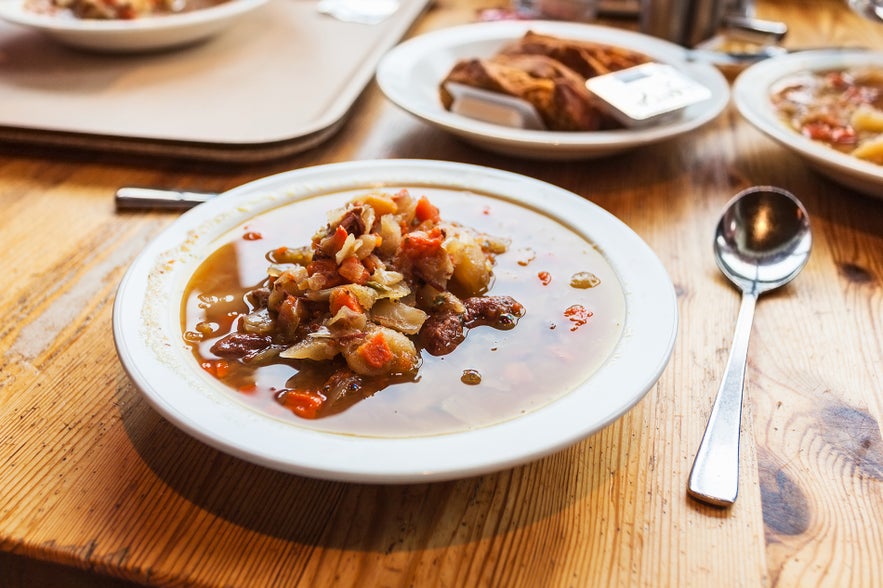
"Kjotsupa" is made of tougher bits of lamb, hearty vegetables, and various Icelandic herbs. Great on a cold winter’s day and a quick lunch option in cafes and restaurants, it's a tasty example of what to eat in Iceland if you want a taste of its rustic, home-cooked traditions.
In years past, sheep meat (as opposed to leaner lamb meat) was cut down and served in soup with sour milk, accompanied by some type of cereal such as barley, when vegetables were rare in Iceland. Sometimes, they would even add skyr (Icelandic yogurt) to the soup for taste.
However, in the late 19th century, Iceland benefited from world trade routes and started adding hearty vegetables such as potatoes and carrots to the soup. From there, it evolved into the much-beloved classic it is today.
Pylsa - Hot Dog

Also spelled "pulsa" and often listed as the top thing to eat in Iceland, pylsa is made from a lamb, beef, and pork blend.
Try "ein med ollu" (one with everything), and you’ll get the famous Icelandic hot dog with crunchy deep-fried onions, raw onions, ketchup, sweet mustard, and creamy remoulade sauce.
The iconic maker of these Icelandic hot dogs is Baejarins Beztu Pylsur, which has locations all around the country, including the famous hot dog stand in Reykjavik.
Traditional Icelandic Food
Photo from Wikimedia, Creative Commons, by the blanz.
Although Iceland offers a wide range of culinary delights, the nation has not forgotten the old ways of preparing food.
Today, you can find traditionally cured meat in grocery stores and restaurants. Once a year, the midwinter festival Thorrablot is celebrated all over the country with feasts of traditional food, which was popular throughout Iceland's history.
Many holidays still center around consuming these traditional foods in Iceland. Although some might look (and smell) scary, they can be quite delicious.
If you’re an adventurous eater, try some of these traditional Icelandic foods.
Skyr - Icelandic Yogurt
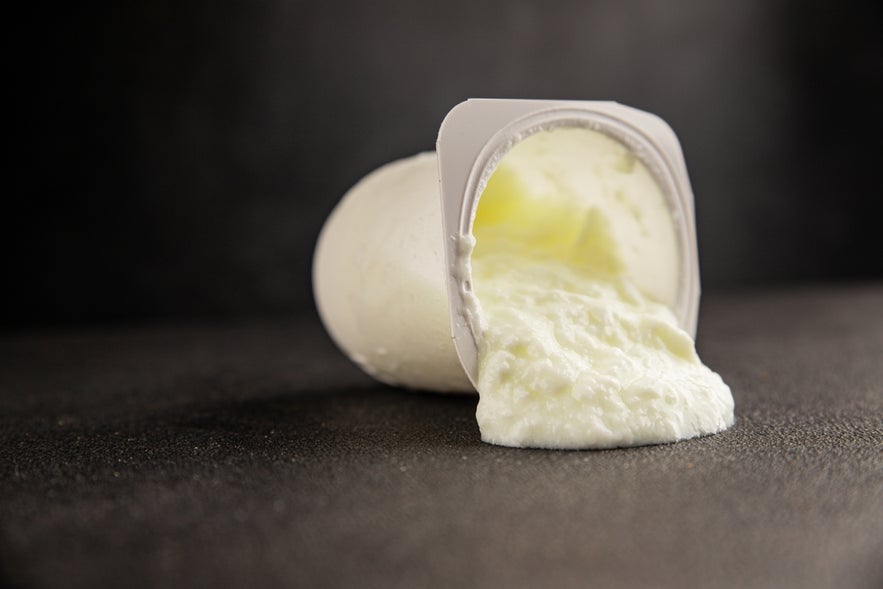 "Skyr" is a dairy product that resembles yogurt but is technically classified as cheese. When Vikings settled here, they brought the culinary traditions of their homeland, including the tradition of making skyr.
"Skyr" is a dairy product that resembles yogurt but is technically classified as cheese. When Vikings settled here, they brought the culinary traditions of their homeland, including the tradition of making skyr.
Making the product involves separating skim milk from the cream. The milk is then pasteurized, and live cultures from previous batches of "skyr" are added.
When the product thickens, it’s filtered, and various flavors are added, like vanilla or berries and, more recently, mango, coconut, and even licorice.
These Norse dishes have evolved differently in each country, with each nation having its own variation. But skyr seems to have vanished entirely in Scandinavia while flourishing in Iceland. Today, you can even find it on shelves of grocery stores around the world.
It’s a traditional Icelandic breakfast choice but can be enjoyed as a meal at any time of the day. They go especially well with blueberries, giving you a great blend of protein and antioxidants.
If you want to learn more about this important dairy product in Iceland's food culture and history, book tickets to the Skyrland Exhibition in the Selfoss New Old Town Center. It's an interactive museum dedicated to Skyr, appropriately called Skyrland.
Skata - Fermented Skate
Múlakaffi is a popular place among locals for "Skötuveislur" or Skate Feasts.
Skata is a type of fermented skate (a species of ray) commonly served with potatoes and tallow, often as a Christmas dish. Skata has a strong ammonia smell, reminiscent of salted cod.
The strong odor can make it intimidating to enjoy, but it’s worth giving it a try on your visit to the land of fire and ice.
Skata is commonly served during Thorlaksmessa (Thorlac’s mass), a celebration held the day before Christmas Eve. During the celebration, Icelanders enjoy skata with potatoes and tallow.
- Read more about Icelandic Christmas Traditions
Slatur - Icelandic Liver Pudding
Photo by Navaro, Wikimedia Creative Commons. No edits made.
Slatur is a liver pudding that is regularly eaten in Iceland year-round. It’s made from sheep’s blood or liver and kidneys, minced fat, oatmeal, rye, and spices.
There are two common versions of slatur in Iceland: "blodmor," a type of black pudding that has been eaten in Iceland since settlement times, and "lifrarpylsa," a liver sausage that's similar to haggis.
"Slatur" is usually served with boiled potatoes and mashed turnips, and the leftovers go great with rice pudding topped with cinnamon.
Hakarl - Fermented Shark
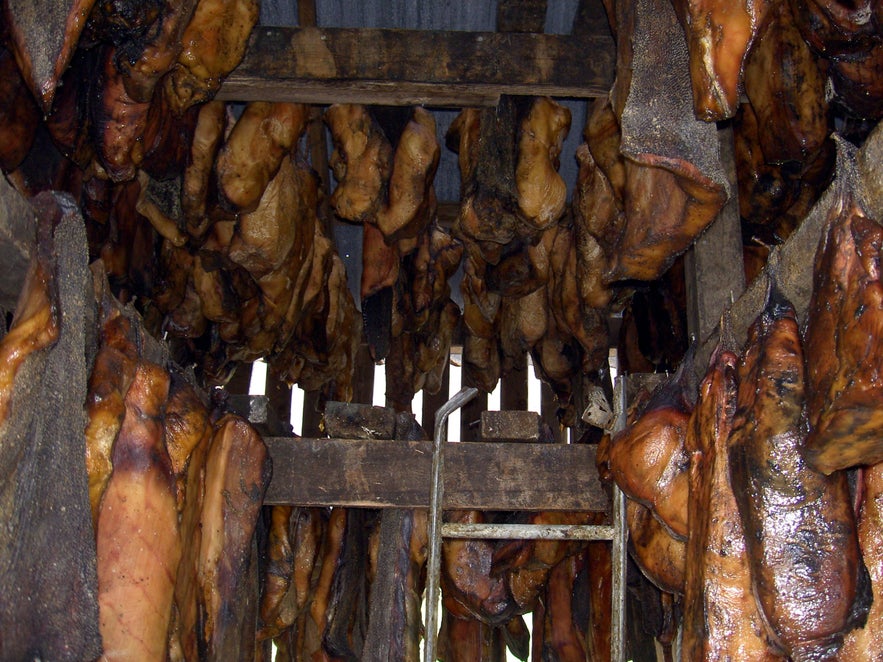
Photo from Wikimedia, Creative Commons, by Chris73. No edits made.
"Hakarl" is a fermented Greenland shark, and it's perhaps the most infamous of all Icelandic food. Greenland sharks are poisonous when fresh as they contain a deadly amount of ammonia, but they are safe to eat after being buried in a hole and left to ferment for six weeks (and up to 12 weeks).
The meat is then hung to dry for four to five months and then served in cubes. This peculiar meal preparation method is age-old, and its exact origins are unclear.
In recent years, it has become customary to drink a shot of Brennivin (Iceland's national spirit) after eating Icelandic fermented shark to help get rid of the flavor. It’s a true test of courage for those exploring Iceland food!
Svid - Boiled Sheep Head
 "Svid" is a boiled sheep head, usually cut in half with the brains removed and hair singed off. It doesn’t taste as bad as it looks (or sounds) and is usually found in buffets served during the Thorrablot midwinter festival.
"Svid" is a boiled sheep head, usually cut in half with the brains removed and hair singed off. It doesn’t taste as bad as it looks (or sounds) and is usually found in buffets served during the Thorrablot midwinter festival.
The tradition was born out of a desire not to waste a single part of the animal, especially when food was scarce. This is why many Icelanders also eat the eyes and tongues of the sheep.
Hrutspungar - Pickled Ram Testicles
 "Hrutspungar" is pickled ram's testicles—boiled and cured in whey. It's another example of traditional Icelandic food with a rich history and reflects the ingenuity of early Icelanders in using every part of the animal.
"Hrutspungar" is pickled ram's testicles—boiled and cured in whey. It's another example of traditional Icelandic food with a rich history and reflects the ingenuity of early Icelanders in using every part of the animal.
A paté version is also easier on the stomach and can be spread on rye bread.
Icelandic Sweets and Confectionery
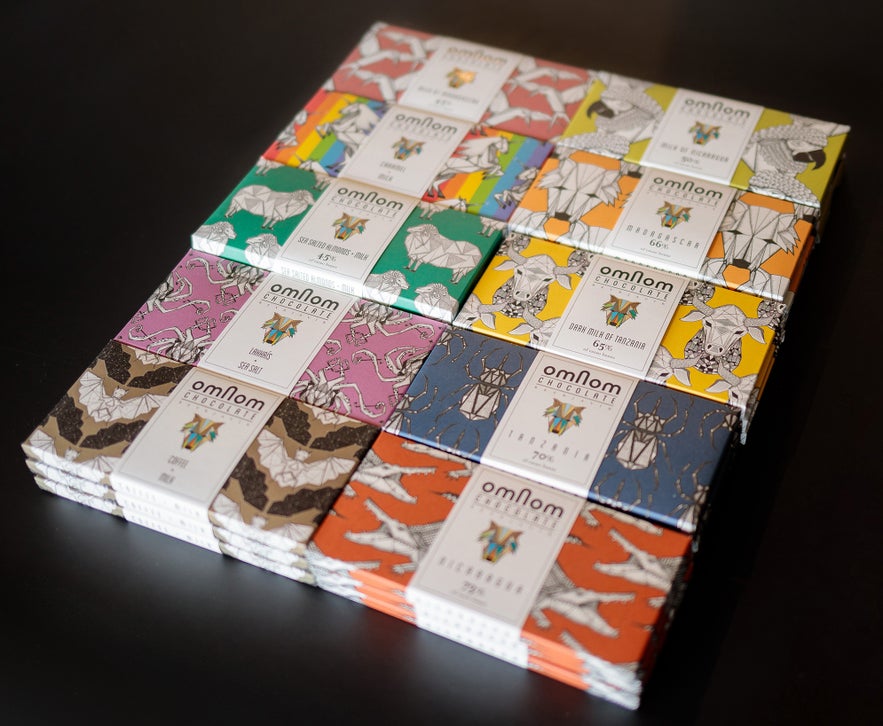
Icelandic food culture isn’t just about hearty meals and fermented flavors; it also includes delightful sweets that cater to every taste. From traditional pastries to unique confections, Iceland’s desserts are worth indulging in.
But what do people in Iceland eat as a treat? These are some of the most popular sweets that will leave your taste buds wanting more.
Icelandic Ice Cream
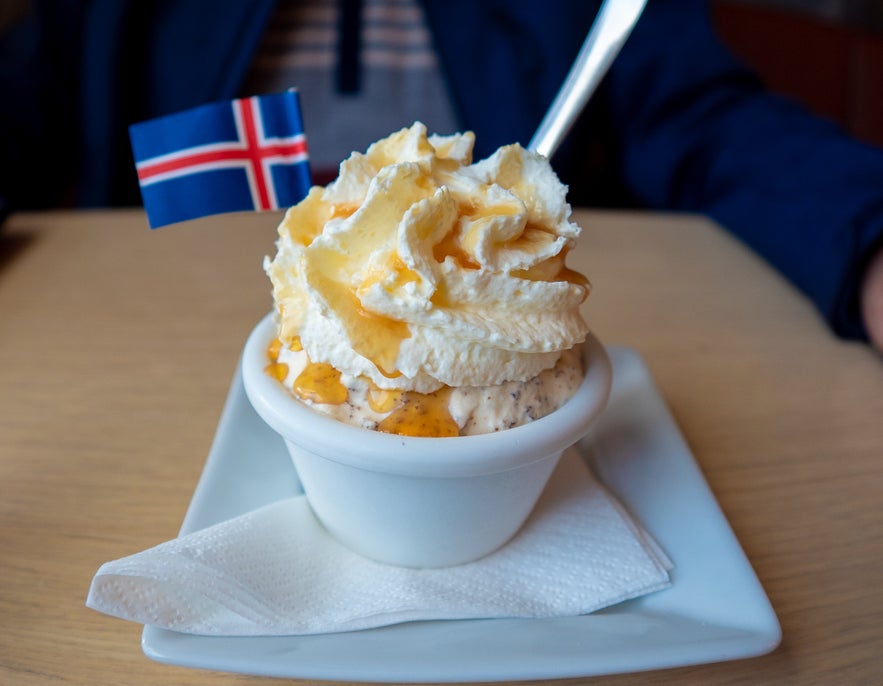 It doesn’t matter if it’s the dead of winter—Icelanders will still eat ice cream. You can find an ice cream parlor in almost every town in Iceland, with many located near a geothermal swimming pool, where it’s a popular treat after a swim.
It doesn’t matter if it’s the dead of winter—Icelanders will still eat ice cream. You can find an ice cream parlor in almost every town in Iceland, with many located near a geothermal swimming pool, where it’s a popular treat after a swim.
Some have even gained a cult following and become attractions in themselves, such as Brynja Ice Cream, which originally opened in 1939.
Soft-serve ice cream is the most popular kind. But don't just get plain ice cream. Dip it in a hard-shell dip, usually made of chocolate, and then cover it in small-sized candy.
If you want to try a true taste of Iceland, order a “bragdarefur.” This is a type of soft-serve ice cream (often vanilla) that’s mixed with three types of candy or fruit and topped with even more candy. It’s widely considered the ultimate Icelandic ice cream treat.
- Where to go for The Best Ice Cream in Iceland
Lakkris - Icelandic Licorice
Photo by John JP, from Wikimedia Creative Commons. No edits made.
Icelanders love licorice or “lakkris,” and you’ll find it in just about every supermarket candy aisle in the country. The most popular kind is chocolate-covered licorice, but you can also find strange combinations like licorice-powdered raisins, dates, and almonds.
If you want a true taste of Iceland, try licorice ice cream dunked in hard-shell licorice dip and covered with licorice powder.
This salty black treat has even gone from the candy aisle into regular food. There’s licorice salt, licorice mustard, licorice sauce for lamb, and even licorice cheese.
Here are some of the nation’s favorites:
-
Draumur and Thristur: Chocolate-covered licorice bars
-
Opal: Licorice lozenges that have been around since 1945
-
Appolo Stjornurulla: A licorice and marzipan roll
-
Lakkrisror: A licorice straw used to drink soft drinks
-
Gammeldags Lakrids: Pure, salty licorice
- Learn more about Icelandic Candy & Chocolate—A Short and Sweet Overview
Icelandic Alcohol
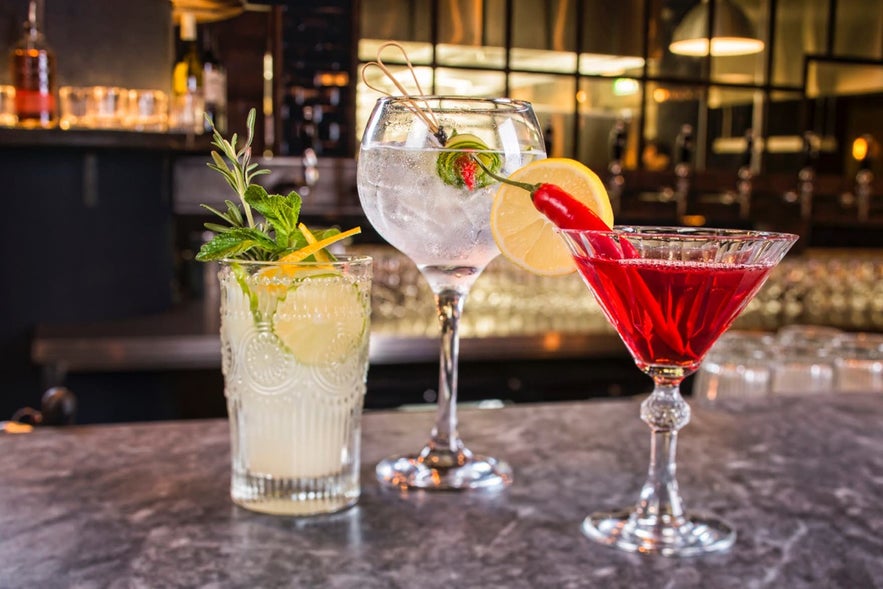
Historically, the settlers of Iceland drank mead and ale, and for centuries, these were the most popular drinks in the country. But more recently, Icelanders have broadened their horizons to include beverages such as:
-
Vodka
-
Imported beer
-
Schnapps
-
Locally-produced spirits
These alcoholic beverages are sure to warm you up on the coldest day.
- Read more about Beer Day in Iceland
Brennivin

In 1935, the government of Iceland produced Brennivin, a clear, unsweetened akvavit schnapps flavored with caraway to celebrate the end of the prohibition.
The bottle contained a black label to make it bland and unappealing to the public, which earned the product the nickname "Svarti Daudi" or "Black Death." Eventually, an outline of Iceland was included on the black label and became one of the nation’s most recognized brands.
The drink, produced by the Egill Skallagrimsson Brewery, is considered Iceland's signature distilled beverage. It still uses the same old recipe and the trademark black label.
A handful of other companies make the drink, modernizing the recipe and infusing the caraway flavor with ingredients like angelica and dulse.
- Learn more: What Is Brennivin and How Is It Made?
Icelandic Liquor
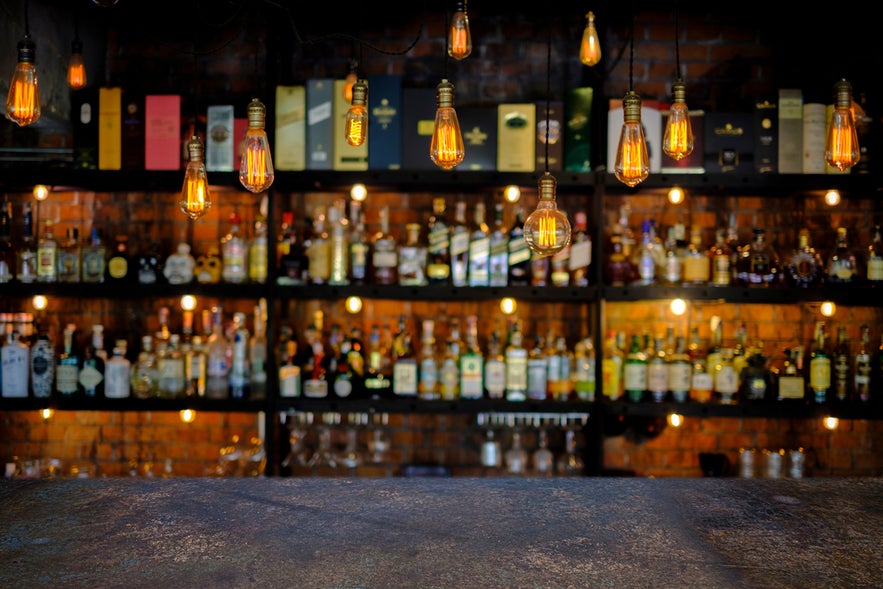 Many distilleries in the country produce schnapps, vodka, or gin inspired by what they find in Icelandic nature. Go to any cocktail bar in Reykjavik and get a cocktail with a liqueur made with ingredients such as birch, rhubarb, or crowberries. A good way to get to know Icelandic liquor is with this guided Reykjavik beer & schnapps walking tour.
Many distilleries in the country produce schnapps, vodka, or gin inspired by what they find in Icelandic nature. Go to any cocktail bar in Reykjavik and get a cocktail with a liqueur made with ingredients such as birch, rhubarb, or crowberries. A good way to get to know Icelandic liquor is with this guided Reykjavik beer & schnapps walking tour.
When visiting Iceland, you should check out these items (just remember to drink responsibly):
-
Opal-flavored vodka shots: This drink is inspired by the popular licorice lozenges. You can also get one called Topas, which is equally tasty.
-
Floki Whiskey: Icelandic whiskey made only from Icelandic ingredients (including homegrown barley). Try the 1-hour Eimverk distillery tour to see how it's made.
Icelandic Craft Beer
 In recent years, craft beers have swept the nation. You can find high-quality Icelandic craft beers at the ATVR alcohol store and numerous bars—you should try at least one of them.
In recent years, craft beers have swept the nation. You can find high-quality Icelandic craft beers at the ATVR alcohol store and numerous bars—you should try at least one of them.
There’s a great selection of local Icelandic beers to try and plenty of bars in Reykjavik to explore, allowing you to take in both the taste and the culture at the same time.
One of the most unique experiences in Iceland is visiting the Kaldi brewery in North Iceland and bathing in beer at the Bjorbodin Beer Spa.
Non-Alcoholic Drinks in Iceland
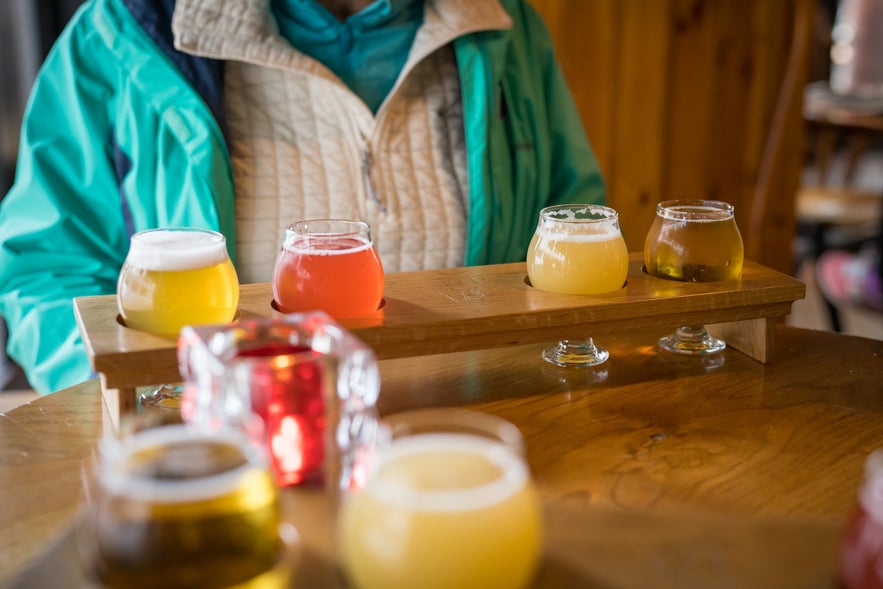 Though there’s no denying that Iceland’s alcoholic beverages are delicious, the country also produces some unique and flavorful non-alcoholic options that both kids and adults can enjoy.
Though there’s no denying that Iceland’s alcoholic beverages are delicious, the country also produces some unique and flavorful non-alcoholic options that both kids and adults can enjoy.
Collab
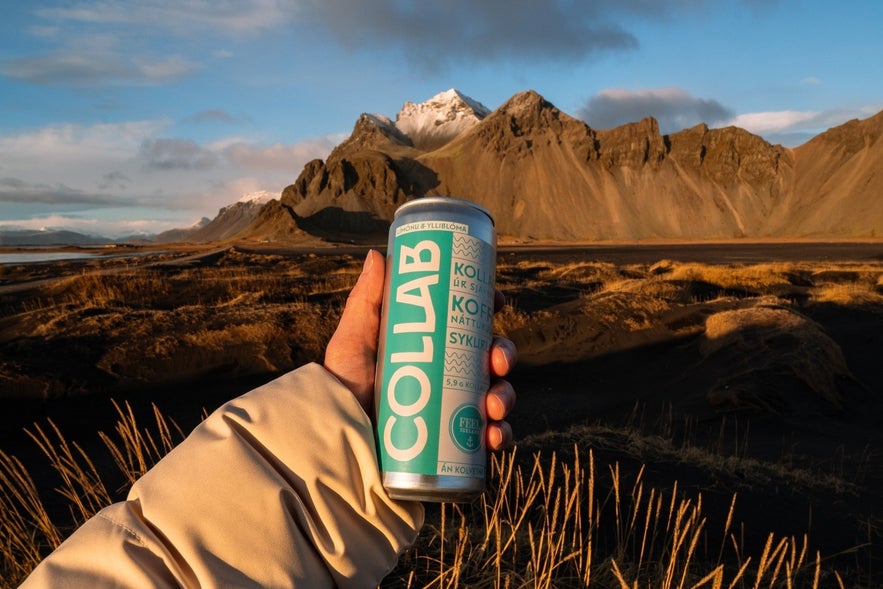
Photo taken from Collab.
Collab is a popular Icelandic non-alcoholic drink that combines sparkling water with caffeine and collagen, marketed as a functional energy drink. It’s available in a variety of fruity flavors like lime, pineapple, and berry, and is commonly found in grocery stores, gas stations, and convenience shops across the country. With no sugar and added vitamins, it appeals to health-conscious consumers looking for a quick boost.
Appelsin
Appelsin is a non-alcoholic orange soda packed full of flavor. It's popular with kids and adults alike. Many tourists describe it as the Icelandic version of Fanta, but with a more orange-like taste.
Malt og Appelsín
Malt is a bitter drink that can be a unique flavour to try on your trip. Some locals drink it throughout the year, but it's mainly popular during Christmas, when it's combined with the aforementioned Appelsin soda.
Malt og Appelsin is the ultimate Icelandic Christmas drink, and locals either mix the two themselves or buy them pre-mixed in grocery stores around the holidays.
What Do They Eat in Iceland?
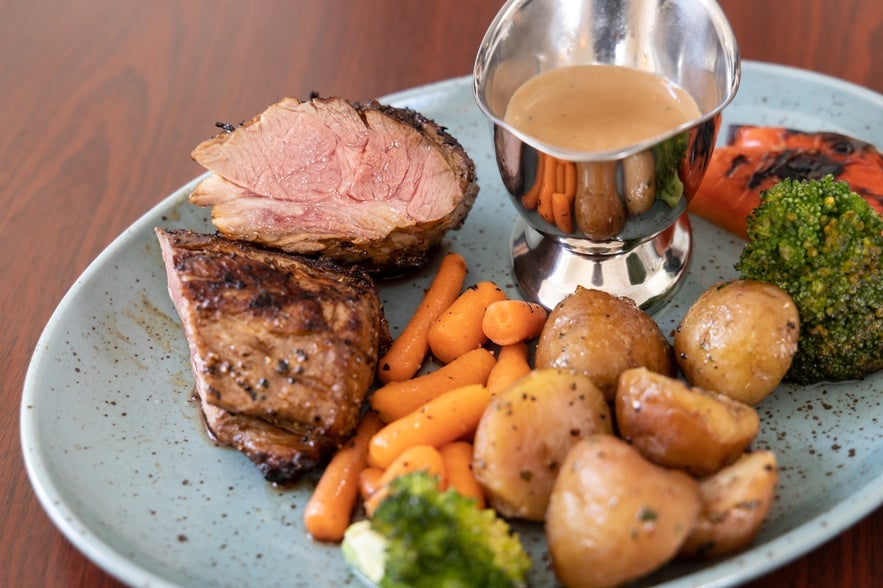 Fish, lamb, and Icelandic skyr (a protein-rich yogurt) have been the main elements of the Icelandic diet for over a thousand years.
Fish, lamb, and Icelandic skyr (a protein-rich yogurt) have been the main elements of the Icelandic diet for over a thousand years.
In the past, Icelandic meals centered around meat due to difficult farming conditions. But modern chefs are making full use of locally grown vegetables, infusing fresh ingredients not originally available into traditional recipes such as microgreens, citrus, and basil.
Modern-Day Icelandic Food
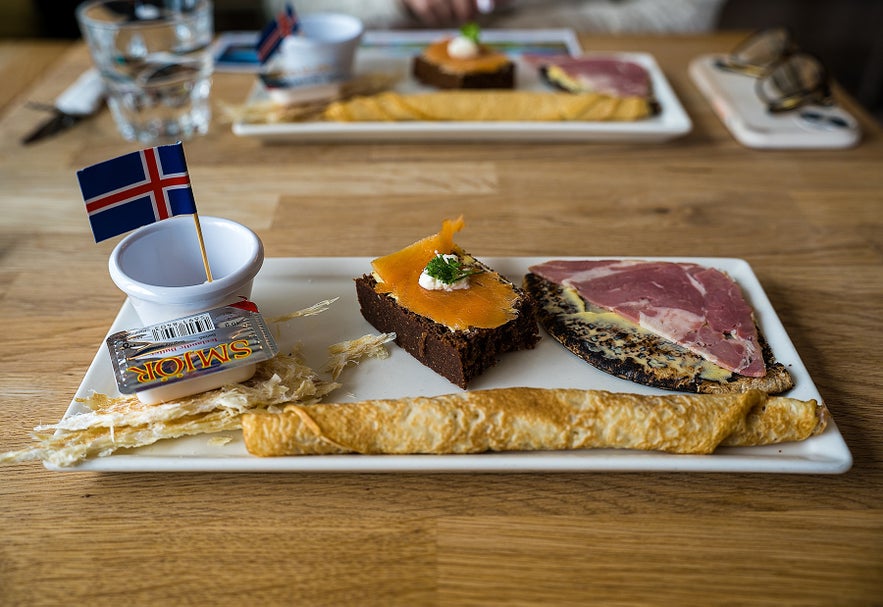
What do people eat in Iceland now? With modern technology, such as freezers and refrigerators, the diet of Icelanders has changed.
Traveling abroad brought all kinds of ideas that, combined with traditional ingredients, created some incredible new flavors in modern Icelandic gastronomy.
In Reykjavik, you’ll find many multicultural restaurants and a burgeoning local food scene. The emphasis is on purity, simplicity, and freshness.
Fine-dining restaurants, gastropubs, brasseries, bistros, and burger joints are aplenty in Reykjavik, and vegan and vegetarian restaurants are rising. In recent years, many food halls have opened up around the city where people can dine together with food from multiple vendors in one place.
However, traveling outside the city, you’ll find more traditional restaurants serving mostly fish and lamb. But picky eaters should always be able to find a pizzeria or a fast-food joint.
Frequently Asked Questions About Icelandic Food
 Want to learn more about food in Iceland? We’ll answer the most common questions to satisfy your appetite—for information and food!
Want to learn more about food in Iceland? We’ll answer the most common questions to satisfy your appetite—for information and food!
What is Iceland’s traditional food?
Iceland has many traditional foods, but the most common are fish, lamb, skyr, soups, and breads. You’ll find many traditional dishes available at most local restaurants and in grocery stores, including:
-
Hardfiskur
-
Rugbraud
-
Hangikjot
-
Laufabraud
-
Svid
What is the national dish of Iceland?
The national dish of Iceland is hakarl, or fermented Greenland shark. This dish has an acquired taste, but if you’re feeling adventurous, it’s worth giving it a try!
What is a typical breakfast in Iceland?
Icelanders enjoy oatmeal, skyr, and bread for breakfast.
Can you get normal food in Iceland?
If you’re not feeling up to trying one of the many traditional Icelandic foods available or just want a taste of home, you’ll be able to find it easily. Countless restaurants serve more modern and normal fare, including burgers, Chinese food, and pizza.
Enjoy the Best That Icelandic Food Culture Has To Offer
 If you’re planning a trip to Iceland, exploring the food culture is a great way to expand your horizons. Local favorites are sure to delight and challenge your taste buds. But if the thought of eating sharks or ram testicles sounds overwhelming, don’t worry.
If you’re planning a trip to Iceland, exploring the food culture is a great way to expand your horizons. Local favorites are sure to delight and challenge your taste buds. But if the thought of eating sharks or ram testicles sounds overwhelming, don’t worry.
You’ll have plenty of food options to choose from, and you're sure to find something to your liking. We recommend starting with a tasty Icelandic hot dog or some of the unique breads and pastries. If you’re feeling more adventurous, a visit to a local Icelandic eatery, like Cafe Loki, is sure to be a real treat.
Looking to learn more about the Reykjavik food scene on your trip? Sign up for the Reykjavik Food Walk Tour!
Have more questions about the tastes of Iceland? Wondering where the locals go for certain dishes? Leave a comment below to get answers from the experts!




